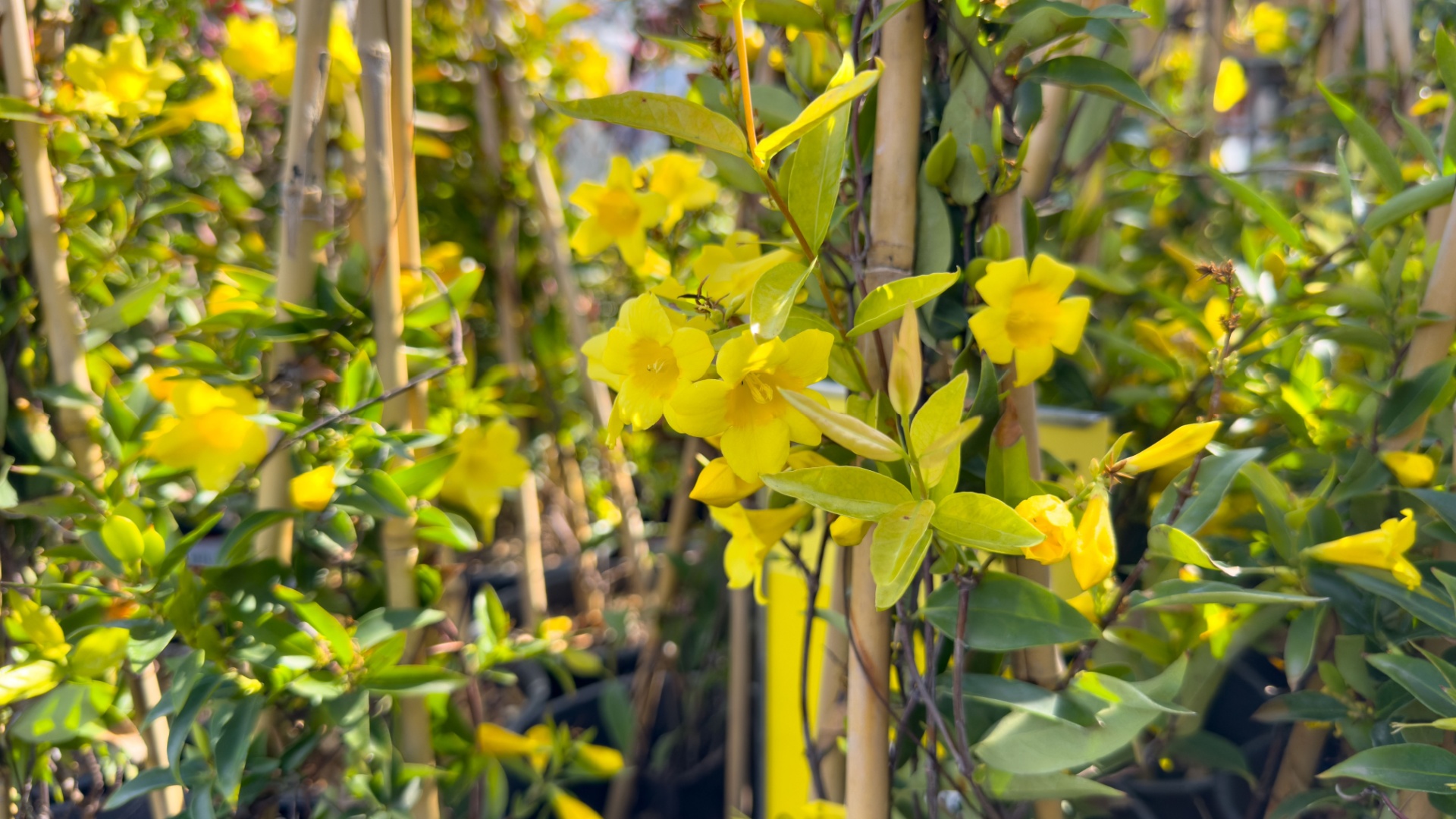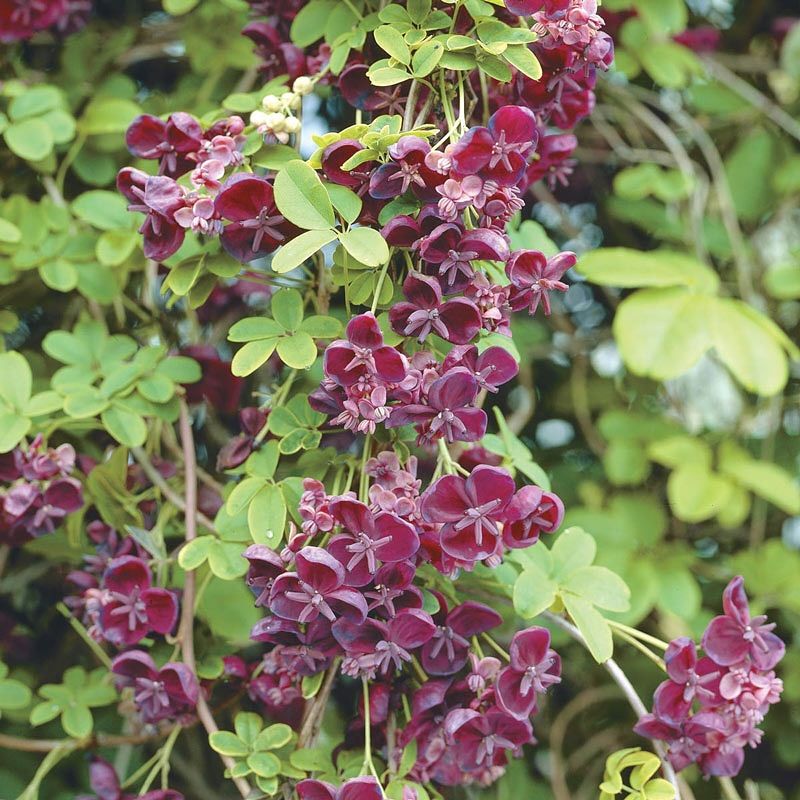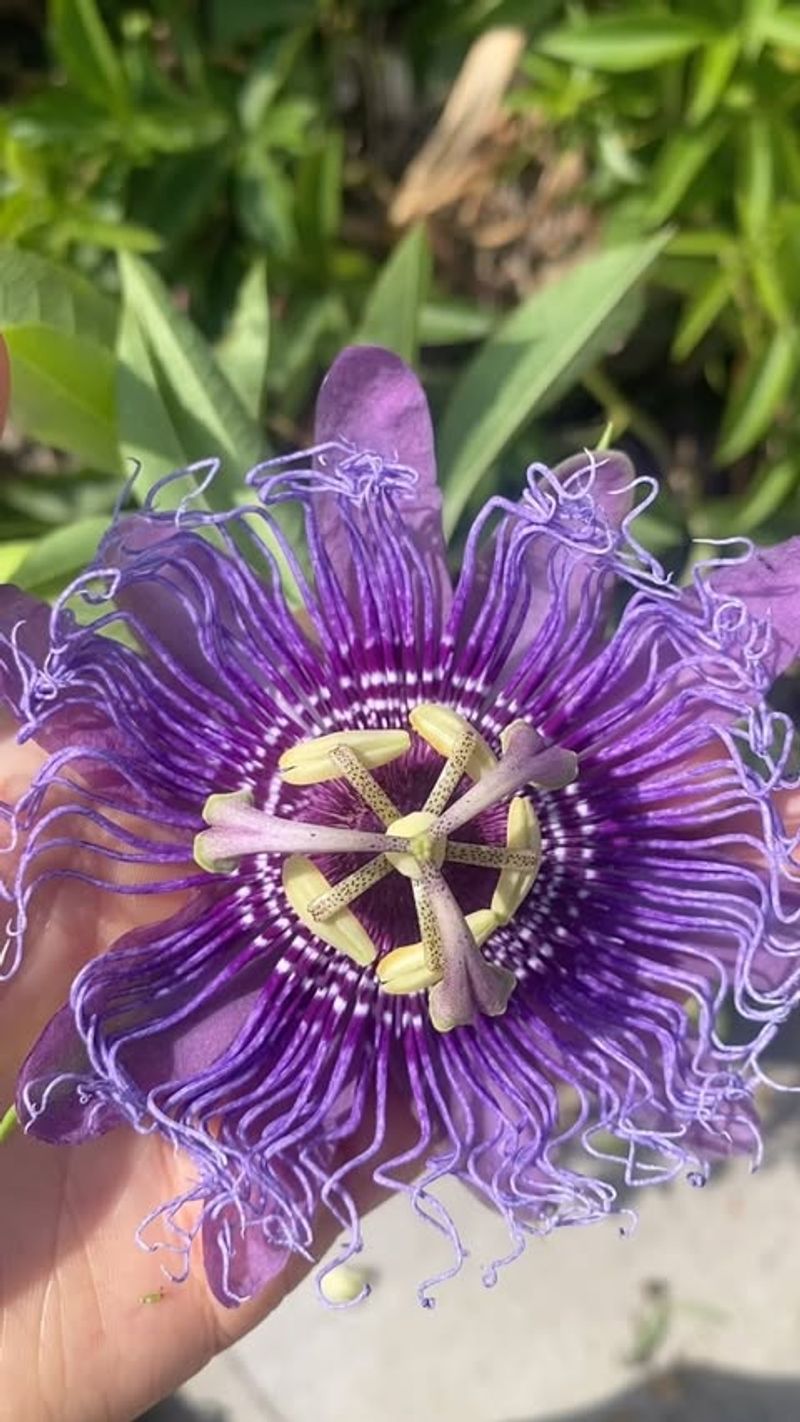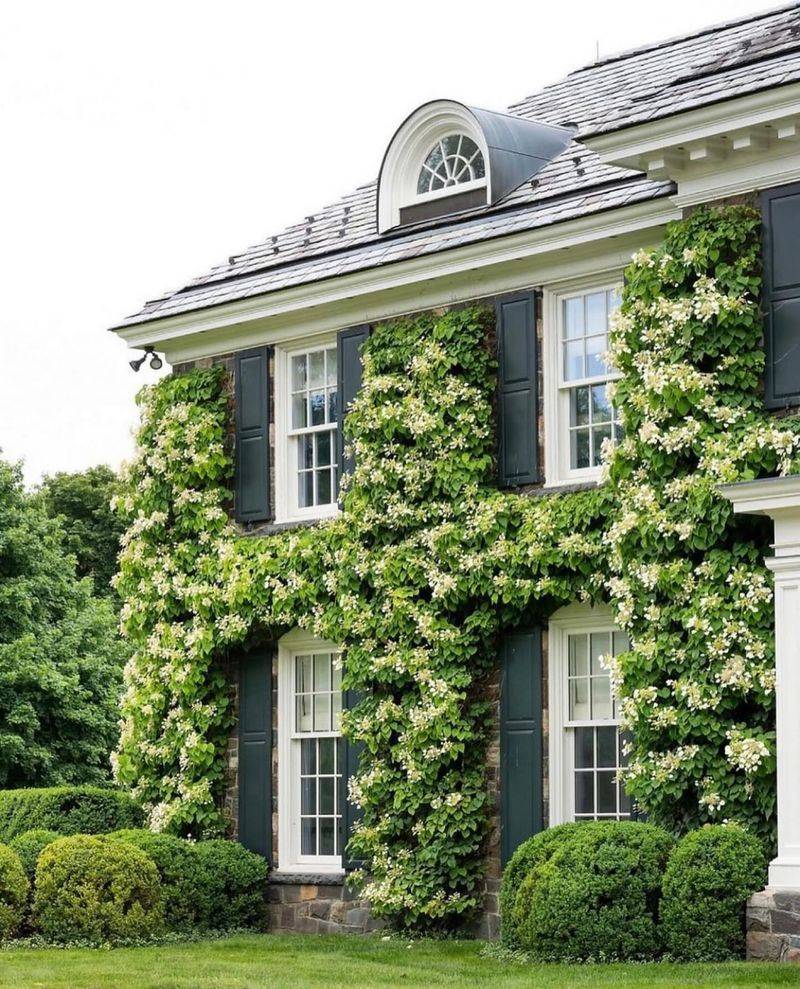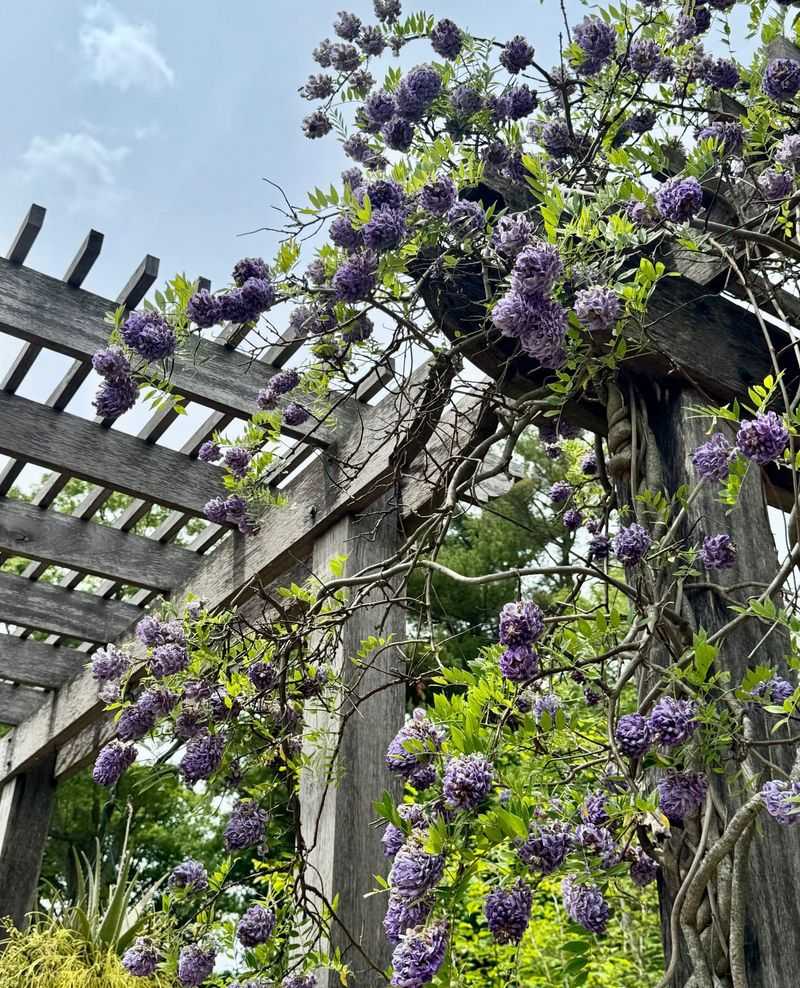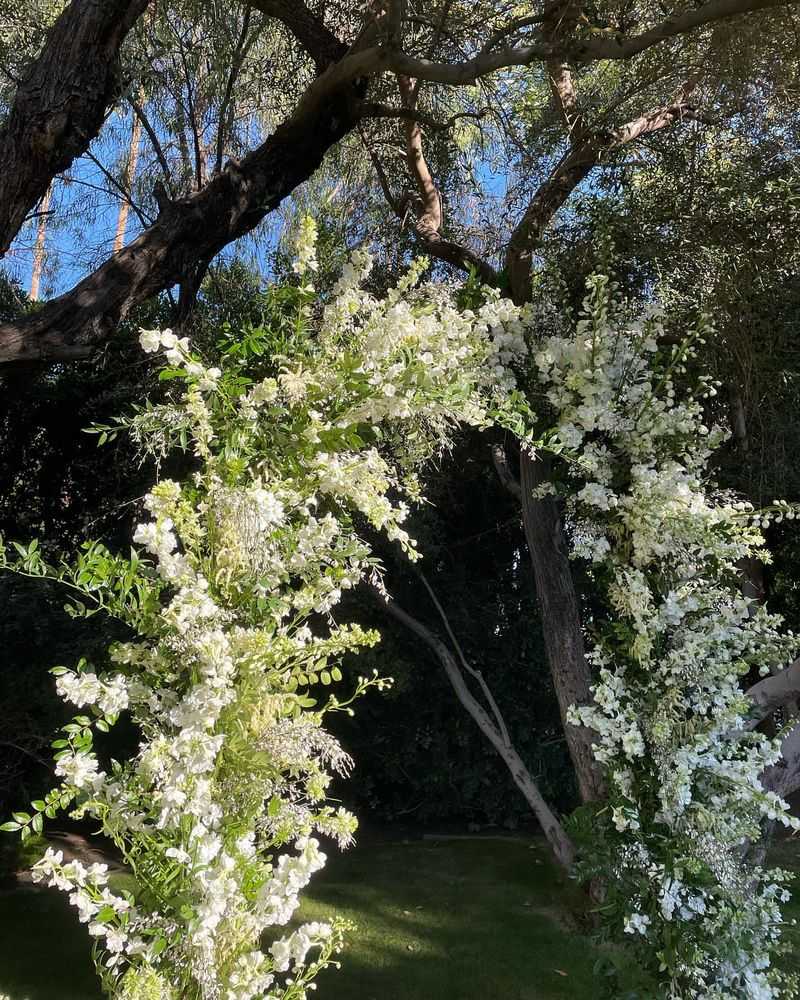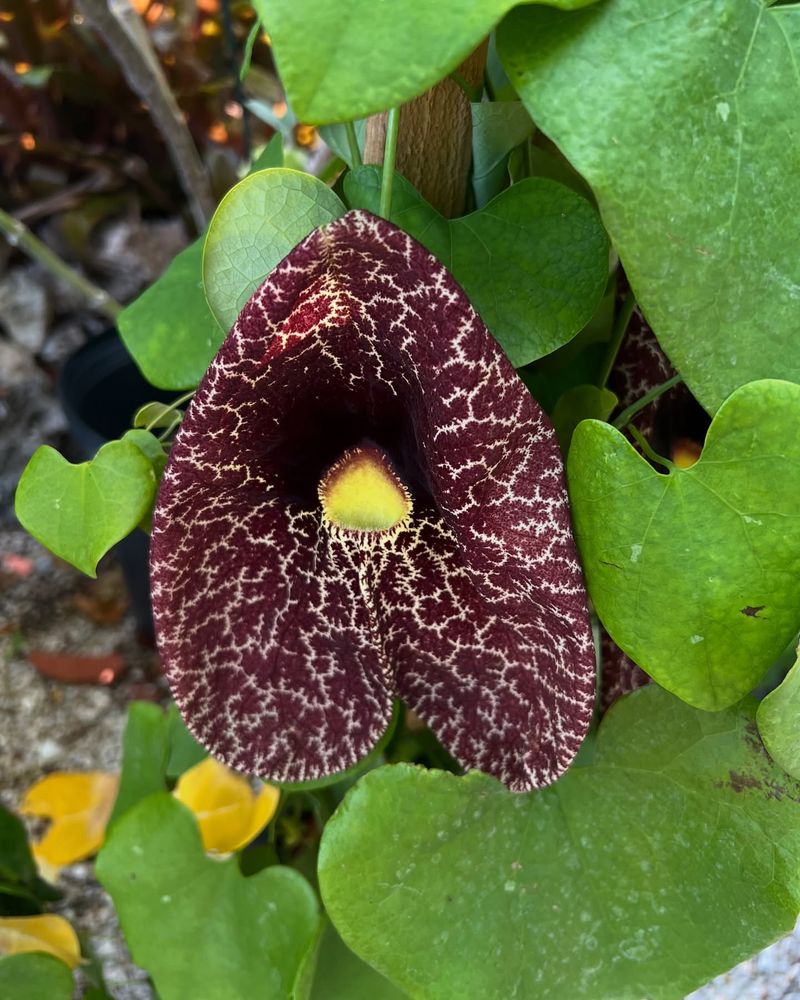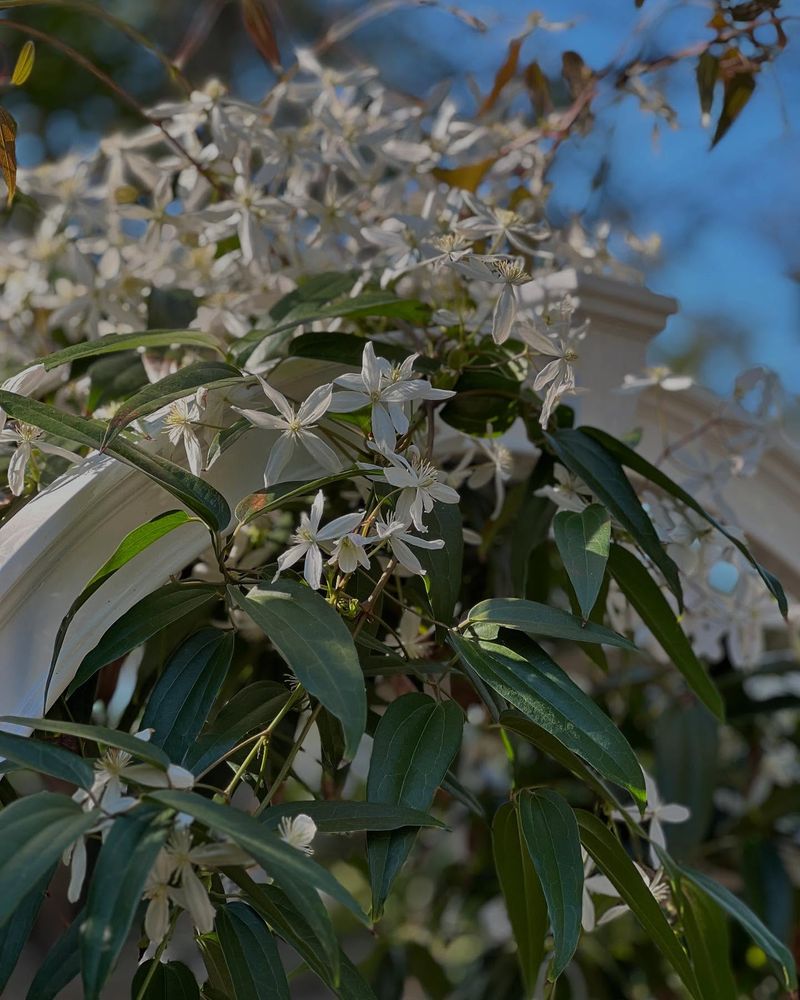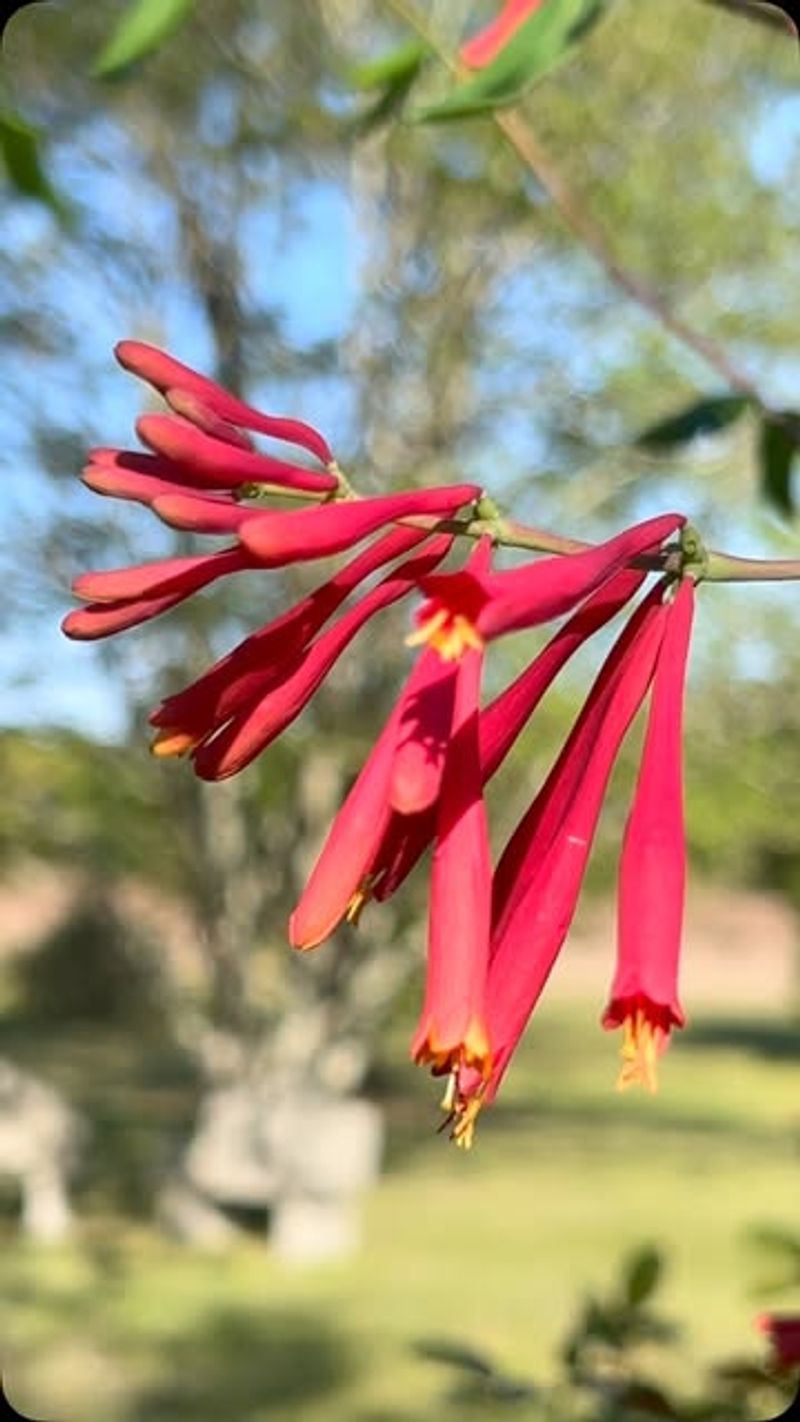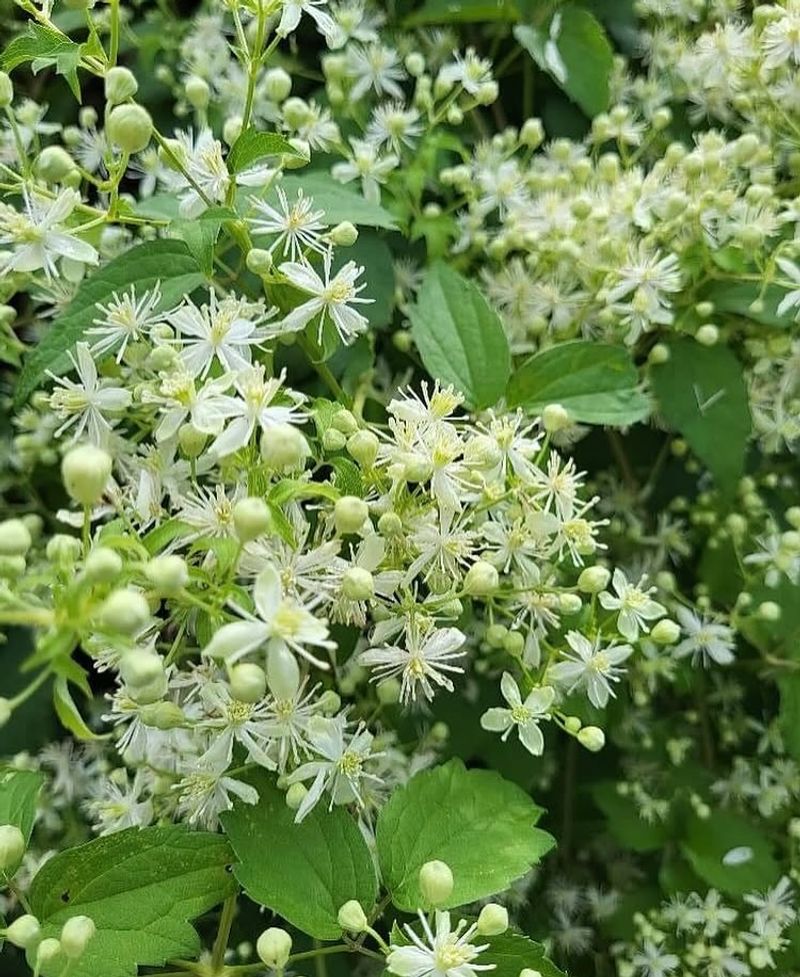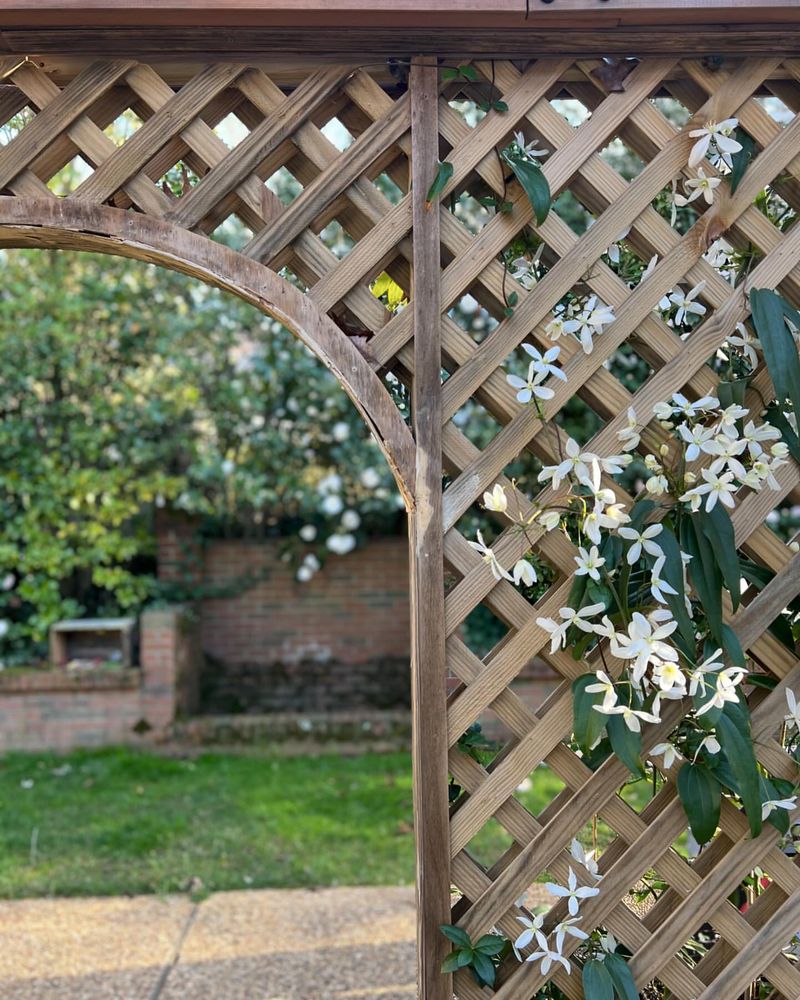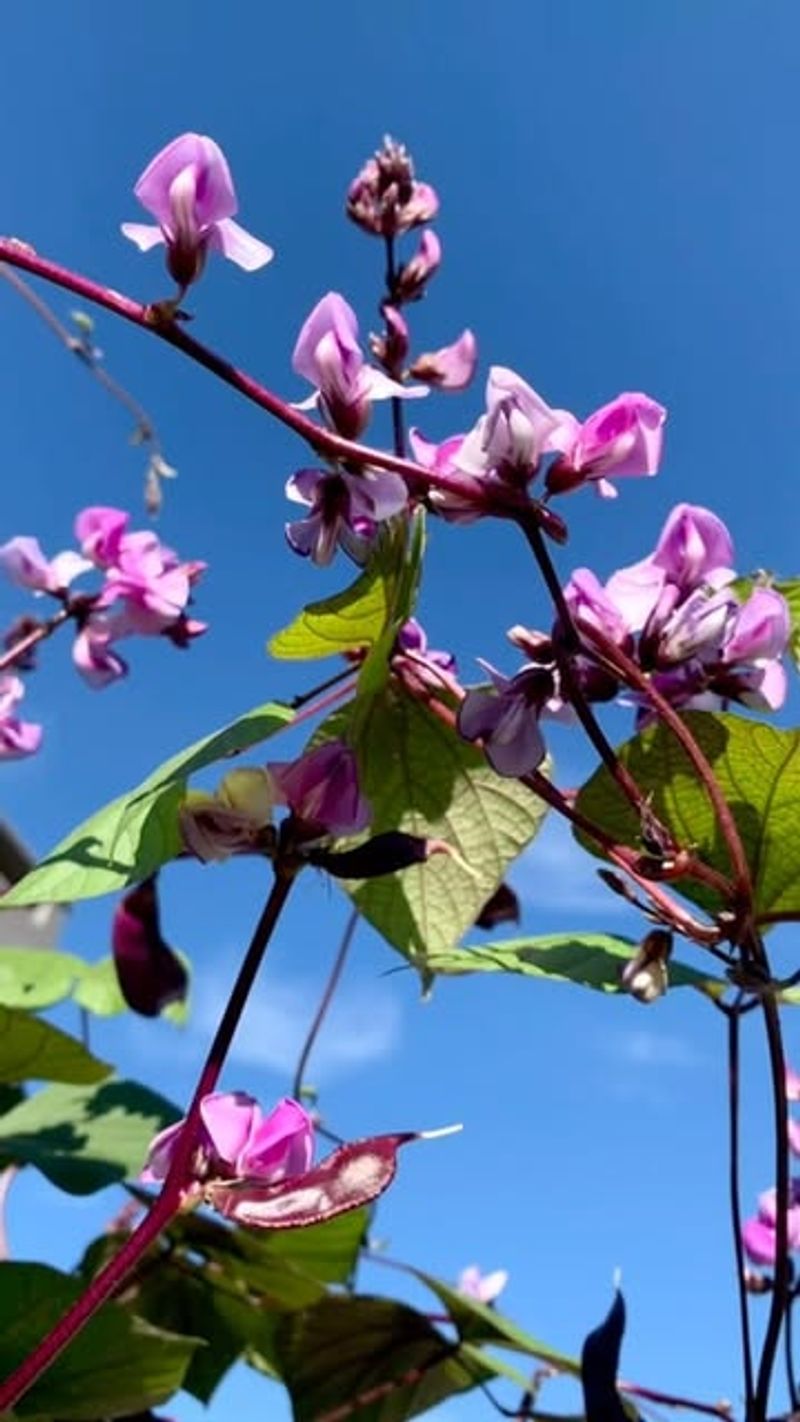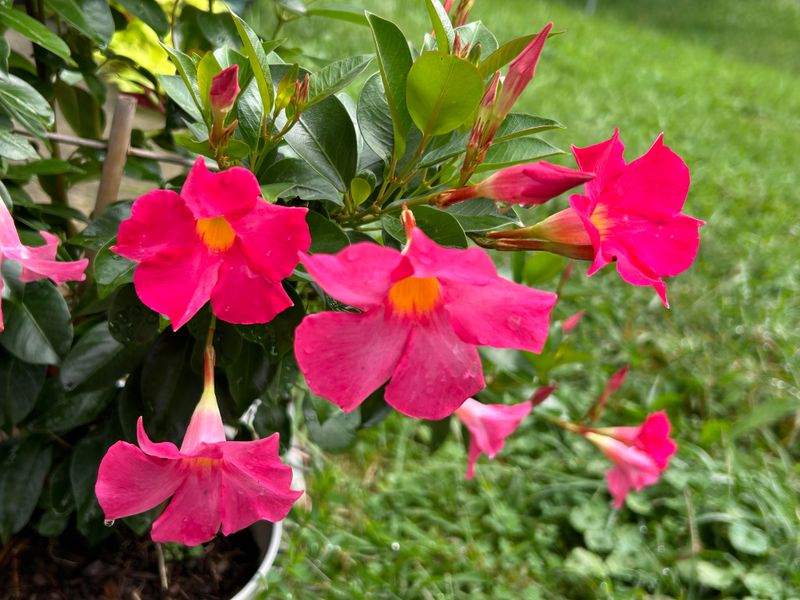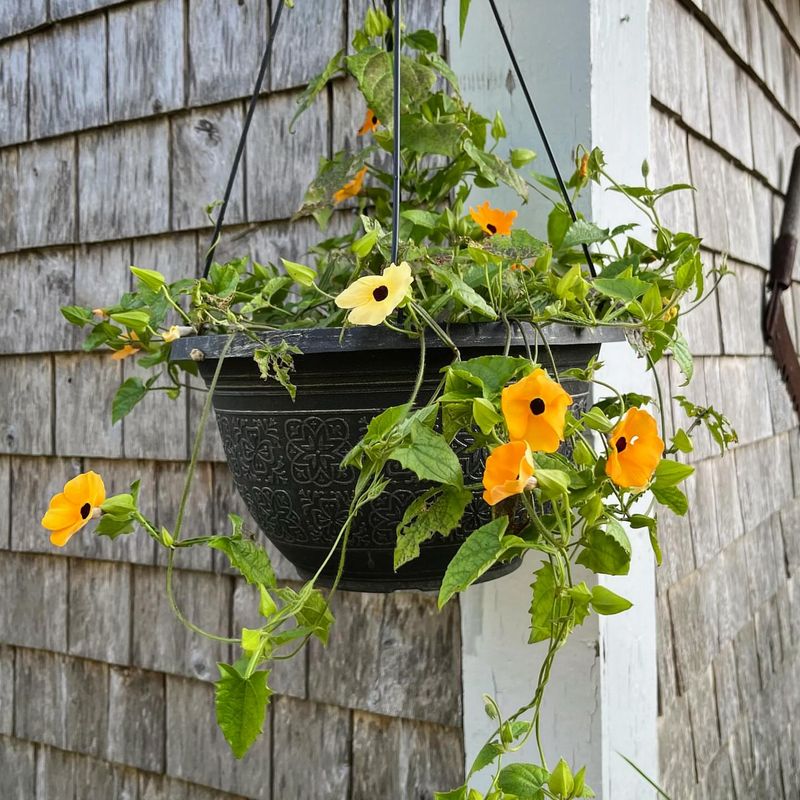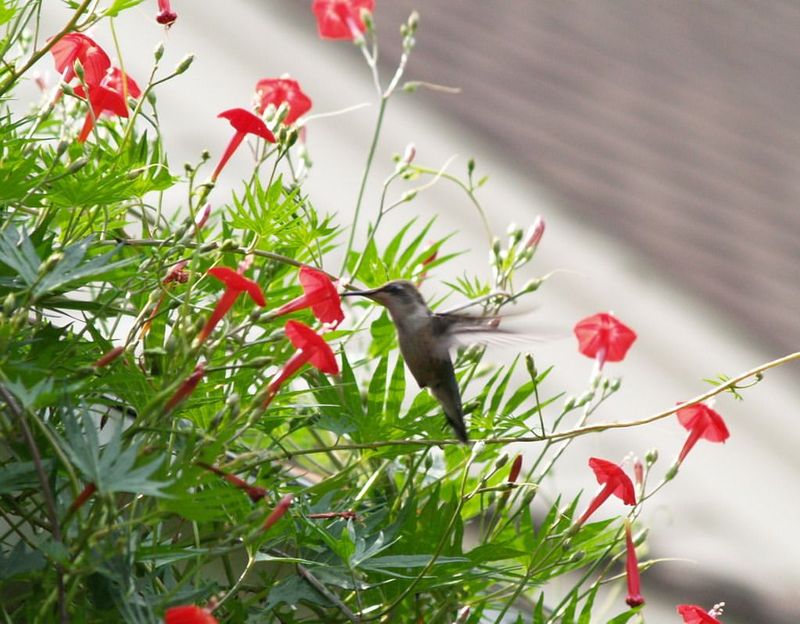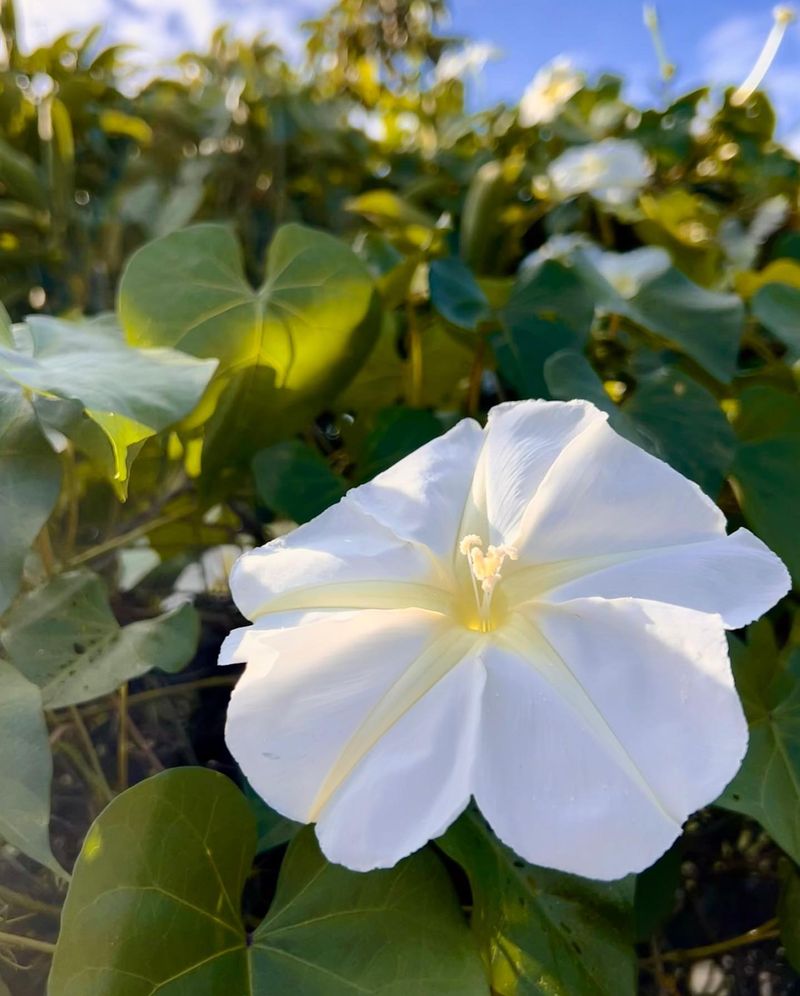Just when you think the garden show is winding down, these late-blooming vines step in and steal the spotlight. In North Carolina, they thrive in the heat, climb with ease, and deliver fresh color when other plants start fading out.
If your yard needs a second wind this season, these vines are ready to climb, cover, and keep the blooms coming.
1. Sweet Autumn Clematis
Star-shaped white flowers blanket this vigorous climber from late August through October, filling the air with a vanilla-honey fragrance that attracts butterflies and bees. The tiny blooms appear in such profusion that they can transform an arbor into a snowbank overnight.
After flowering, fluffy seedheads create additional visual interest. Plant in well-drained soil with roots shaded and vines in sun. Though aggressive, regular pruning keeps it manageable while encouraging more blooms.
2. Trumpet Honeysuckle
Unlike its invasive Japanese cousin, our native trumpet honeysuckle (Lonicera sempervirens) behaves itself while putting on a spectacular show. Tubular scarlet flowers appear in spring but often continue blooming through fall, especially with deadheading.
Hummingbirds can’t resist the nectar-rich blossoms, making your garden a hotspot for these tiny visitors. Semi-evergreen in milder parts of North Carolina, this adaptable vine thrives in average soil and moderate water, climbing 10-15 feet.
3. Chocolate Vine
Mysterious and unusual, chocolate vine (Akebia quinata) gets its name from the subtle cocoa scent of its peculiar purple-brown flowers. Though it blooms primarily in spring, it often produces a second flush of flowers in late summer to fall.
The five-lobed leaves remain attractive throughout the growing season. Hardy throughout North Carolina, this semi-evergreen climber can reach 20-40 feet but responds well to pruning. Plant where you can appreciate both the flowers’ fragrance and their quirky shape.
4. Carolina Jessamine
Golden trumpets announce spring’s arrival on this beloved native vine, but many gardeners don’t realize it often reblooms in fall. The glossy evergreen foliage provides year-round structure while the fragrant yellow flowers brighten autumn gardens.
Growing 10-20 feet tall, Carolina jessamine (Gelsemium sempervirens) thrives throughout the state, from coast to mountains. Pollinators adore the nectar-rich blooms. Consider training it on a mailbox post or fence where its sweet scent can be appreciated up close.
5. Passionflower
Otherworldly blooms make passionflower (Passiflora incarnata) a conversation starter in any garden. Our native species, also called maypop, produces intricate lavender flowers from summer until frost, followed by edible yellow fruits.
Beyond its beauty, this vine serves as the exclusive host plant for gulf fritillary butterflies. Hardy throughout North Carolina, it dies back in winter but returns vigorously in spring. The roots spread enthusiastically, so give it room to roam or contain it with barriers.
6. Climbing Hydrangea
Patient gardeners reap remarkable rewards with climbing hydrangea. Though slow to establish, this vine eventually creates a spectacular living tapestry on walls, trees, or sturdy structures. While its main bloom period is early summer, sporadic flowers often appear into fall.
The peeling cinnamon bark provides winter interest when other vines look bare. Preferring partial shade and consistent moisture, climbing hydrangea thrives in the Piedmont and mountain regions. Its self-clinging habit means no tying or training required.
7. American Wisteria
Forget the aggressive Asian wisterias that can swallow a house! Our native American wisteria (Wisteria frutescens) offers similar beauty without the thuggish behavior. Fragrant purple flower clusters appear in spring, with a welcome repeat performance in late summer to fall.
Growing at a manageable pace, this vine reaches 15-30 feet. Unlike its Asian cousins, it blooms reliably when young. The ‘Amethyst Falls’ cultivar is particularly well-behaved for smaller spaces. Provide sturdy support and full sun for best flowering.
8. Crossvine
Evergreen and vigorous, crossvine (Bignonia capreolata) earns its keep year-round in North Carolina gardens. Trumpet-shaped orange-red flowers appear abundantly in spring, then sporadically through fall, especially in response to rain after dry periods.
Hummingbirds find the nectar irresistible. The glossy leaves take on purple tints in winter, adding seasonal interest. Self-clinging tendrils attach firmly to surfaces, making this an excellent choice for covering walls, fences, or arbors without additional support.
9. Silver Lace Vine
Speedy coverage makes silver lace vine (Fallopia baldschuanica) perfect for problem areas needing quick solutions. Frothy white flower sprays appear from late summer through fall, creating a cloud-like effect against the bright green foliage.
Growing up to 25 feet in a single season, this vigorous climber thrives in poor soil where other plants struggle. Ideal for screening unsightly views or covering large structures quickly. Regular pruning keeps its enthusiastic growth in check while promoting more abundant flowering.
10. Dutchman’s Pipe
Grown primarily for its enormous heart-shaped leaves, Dutchman’s pipe creates dense shade on pergolas and arbors. The curious pipe-shaped flowers appear in spring but occasionally rebloom in fall, hidden beneath the lush foliage.
Our native species (Aristolochia macrophylla) serves as the sole host plant for pipevine swallowtail butterflies. Thriving in the mountains and Piedmont regions, this long-lived vine can grow for decades, reaching 20-30 feet. The dense foliage provides excellent privacy and cooling shade for patios.
11. Evergreen Clematis
While most clematis lose their leaves in winter, evergreen clematis (Clematis armandii) maintains glossy foliage year-round. Though primarily spring-blooming, it occasionally produces a second flush of fragrant white star-shaped flowers in fall.
Best in protected locations in the Piedmont and coastal regions, this clematis can struggle in the mountains. The leathery, elongated leaves create an attractive backdrop even when not in bloom. Plant near windows or patios where the almond-vanilla fragrance can be enjoyed.
12. Coral Honeysuckle
Hummingbirds flock to the tubular red flowers of coral honeysuckle (Lonicera sempervirens), making this native vine a wildlife magnet. Unlike the spring-only bloom of many vines, coral honeysuckle continues flowering sporadically through fall, especially when deadheaded regularly.
The blue-green foliage remains semi-evergreen in milder parts of North Carolina. Growing 10-15 feet tall, this adaptable vine thrives in sun to part shade. The ‘Major Wheeler’ cultivar offers particularly prolific blooming from spring through fall.
13. Virgin’s Bower
Delicate white flowers cover this native clematis (Clematis virginiana) from late summer through fall, followed by decorative feathery seedheads that persist into winter. The small star-shaped blooms might lack the drama of hybrid clematis, but they more than compensate with their profusion.
Growing 12-20 feet, virgin’s bower scrambles happily through shrubs or up trellises. Adaptable to various conditions throughout North Carolina, it’s particularly valuable for naturalizing along woodland edges. The fluffy seedheads create a misty effect in autumn gardens.
14. Confederate Jasmine
Despite its name, confederate jasmine (Trachelospermum jasminoides) isn’t a true jasmine but delivers equally intoxicating fragrance. While its main flowering occurs in spring, sporadic blooms often appear through fall, especially in coastal areas.
The glossy evergreen leaves provide year-round structure. Best in the eastern half of North Carolina, this vine may need protection in colder mountain areas. Train it on a trellis near outdoor living spaces where its sweet scent can perfume evening gatherings.
15. Hyacinth Bean
Showy purple stems, heart-shaped leaves, and vivid purple flowers make hyacinth bean (Lablab purpureus) a standout annual vine for North Carolina gardens. The ornamental purple bean pods follow the flowers, creating dual-season interest from summer until frost.
Growing rapidly to 10-15 feet, this vine provides quick coverage for trellises, arbors, or fences. Though treated as an annual in our climate, it easily self-seeds or you can collect pods for next year. The entire plant is ornamental, from stems to flowers to pods.
16. Mandevilla
Tropical splendor comes to North Carolina gardens with mandevilla vines. Trumpet-shaped flowers in pink, red, or white continue blooming until frost, providing months of color. The glossy foliage remains attractive throughout the growing season.
Though not winter-hardy throughout the state, mandevilla can be overwintered indoors as a houseplant or treated as an annual. Growing 6-10 feet in a season, these vines excel in containers on patios and decks. Their climbing habit makes them perfect for decorative trellises in highly visible locations.
17. Black-eyed Susan Vine
Cheerful yellow or orange flowers with distinctive dark centers make black-eyed Susan vine (Thunbergia alata) a delightful addition to hanging baskets and containers. Blooming non-stop from summer until frost, this annual vine provides reliable color when many perennials have finished.
Growing 6-8 feet in a single season, it’s perfect for quickly covering small trellises or cascading from hanging planters. The heart-shaped leaves create an attractive backdrop for the numerous flowers. Though not winter-hardy in North Carolina, it’s easily grown from seed each year.
18. Cardinal Climber
Hummingbirds can’t resist the brilliant red tubular flowers of cardinal climber (Ipomoea sloteri). This annual vine blooms prolifically from midsummer until frost, creating a spectacular display against its finely cut, fernlike foliage.
Growing 10-15 feet in a single season, cardinal climber quickly covers trellises, fences, or arbors. The dainty one-inch flowers appear in such profusion that they can nearly hide the foliage. Though not winter-hardy in North Carolina, it readily self-seeds or you can collect seeds for next year.
19. Moonflower
Magical evening gardens come alive with moonflower (Ipomoea alba), whose huge white blossoms unfurl at dusk and release a sweet fragrance throughout the night. The 6-inch flowers glow in the moonlight, creating an enchanting atmosphere for evening entertaining.
Growing 10-15 feet in a season, this annual vine provides quick privacy for patios and decks. Plant near outdoor seating areas where the nocturnal show can be appreciated. Though not winter-hardy in North Carolina, moonflower is easily grown from seed each year.

